In front of us there are boundless crowds – we are standing on the most popular promenade of Shanghai. The Bund Promenade is a must-see for every sightseer visiting this tourist metropolis. Only a short visit in this place clearly demonstrates that the scale of China exceeds all European expectations.
Thousands of people are gathering to cast a glance and take an obligatory selfie with the famous Shanghai City – if guides are not wrong, it is the biggest assembly of buildings taller than 100 metres in the world. The skyline is definitely breathtaking – moreover, it is also a clear sign that the economic and urban development of China has already reached an unprecedented globally level. This developmental trend also dominates the consumer market. The Middle Kingdom is becoming the biggest market of the world – consequently, all material goods sell well, including sports and outdoor products. Undoubtedly, trade shows are the best platform for getting to know this huge market and potentially deciding to enter it.
ISPO SHANGHAI 2016
Shanghai ISPO took place from July 6 to July 8, 2016. It was the second edition of this summer multi-segment event which was located at a high-tech fair facility – the Shanghai New International Exhibition Center (SNIEC). Similarly to previous year, the trade-show exhibition space was 33,000 m2. Booths of brands and other exhibition facilities filled three out of a dozen halls available at the SNIEC. It might be said that the scale of the event is relatively small but the organizers tried to emphasise the huge variety of segments with special attention paid to summer activities – Running, Fitness, Paddling complemented by other water sports, Action and Sport Style. Of course, outdoor companies were also present among exhibitors.
The mentioned diversity concerned also the scope of exhibitors’ activities – one could find both booths of producers and distributors. ISPO SHANGHAI strongly emphasises its international character, which of course is aided by Shanghai itself – it is the most open and accessible city in China. This is confirmed by a strong representation of companies from Far East: like Taiwan or Korea, which are supplemented by European, American and Australian brands. Exhibitors include, among others, brands well-known from European trade shows: Lanex, Camelbak, Fjällräven, Lifestraw, Millet, Sea to Summit, Smartwool, Swix, Thule, Ulvang, Tecnica and YKK.
The biggest outdoor exhibitors with independent booths were Fjällräven, ClimAlp, and Millet. Many brands decided to present their offers on relatively modest surface – which to some degree resembles our local outdoor trade fair in Kielce, Poland. However, this sometimes cosy atmosphere had its advantages, because it allowed you to easily reach smaller manufactures and distributors. The size of the Chinese market makes it possible even for smaller businesses to operate on a significant market scale.
The representation of our southern neighbours from the Czech Republic drew our attention among exhibitors. A small but well organized Czech pavilion attracted not only us. Martin Václavek from Lanex, who is responsible for the company’s strategic development, stressed the importance of the Chinese market on which his company has been present for a couple of years. Lanex is still searching for clients and distributors (the company co-operates with a few distributors representing various regions of China), which manifests itself also in the company’s presence at ISPO BEIJING. Efforts of Lanex are supported by the Czech Ministry of Export, which does not change the fact that Czech companies tend to have more initiative than Polish entrepreneurs.
Workshops, conferences, contests, awards
The basic format of the trade show is accompanied by numerous supporting events. As Tobias Gröber stressed in an interview with 4outdoor, Chinese managers are eager to acquire business know-how (see: interview page 29). Specially for them the organizers prepared many seminars, business contests and presentations.
Subjects covered in the presentations were very diversified. Starting with industry panels: Sports Tourism Forum, Fitness Industry Forum, China Sports Industry Innovation & Investment Forum, China Sports Media Forum, Kids Outdoor Forum, through lectures: How the China’s Running Club Economic Growth, and finishing with trainings and consultation: How to do strength training for a marathon, How to choose ski destination abroad, When a runner becomes a pacer etc.
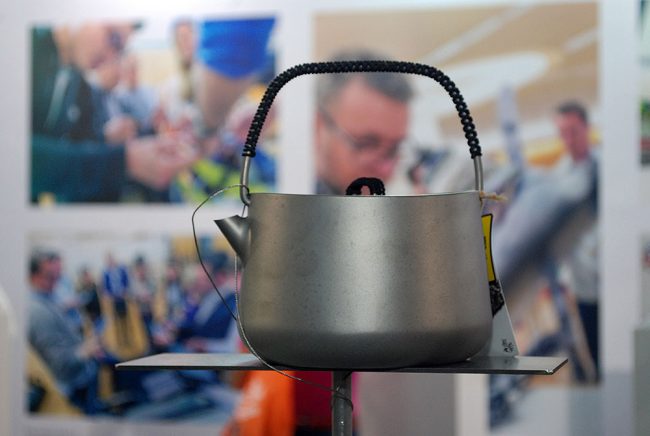
One of the awarded products – the teapot with traditional Chinese design (fot. Piotr Turkot / 4outdoor.pl)
Lecture halls prepared specially for this occasion were packed with audiences, who listened with interest both to business and training tips. This great yearning for knowledge is a clear sign of a great boom for sports activities in China.
For distributors
The event was also accompanied by a format familiar to us from ISPO MUNICH i.e. exhibitions of awarded products. It must be said that the exhibition of ISPO AWARD GOLD WINNER ASIAN PRODUCTS was very well exposed. The awarded models from renowned brands – e.g. Kailas, BlackYak, Northland or Toread – did not disappear in congestion of other prizes. We were able to appreciate the products’ innovativeness, great design and high quality materials. Far East is commonly associated with “subcontracting”, however, the awards proved that in many cases the moment when the apprentice surpasses the master is very near…
Therefore, ISPO SHANGHAI may act as a platform for European distributors to acquire new brands. Awarded products are one thing but at many stands one could find brands which are little known in Europe but could easily gain customers’ trust. As good examples may serve a Korean company Zed, specializing in accessories, or ZealWood – a producer of merino clothing.
Korean companies were well represented at the fair. They were visible both on individual stands and exhibiting boxes located in two Korean zones. In one of the zones, we could admire the offer of brands associated in a dynamically developing organization: the Korea Outdoor & Sports Industry Association.
For producers
ISPO SHANGHAI is also an interesting platform for European producers – it might be also an attractive direction for Polish companies. As Tobias Gröber stressed, this is an incredibly fast developing market of the future. This does not mean that any company can successfully operate on this market. The rudimentary conditions are: persistence, significant financial resources and last but not least – suitable knowledge of the Chinese market. Such knowledge cannot be acquired instantly. Many companies started their Chinese adventure several years ago (e.g. Italian company Tecnica has operated on the market for 10 years) and since then have been gradually learning the market mechanisms and gaining customers.
Many of our interviewees highlighted the role of selecting a suitable partner for conducting business in China. Sometimes advantages of finding a reliable local partner might be quite prosaic – in China prices for foreigners are simply higher. Moreover, a suitable business partner will not only allow you to get through the maze of legal regulations concerning selling products in China, but will also play a crucial role in initiating co-operation with retailers in various, sometimes very remote, parts of the country.
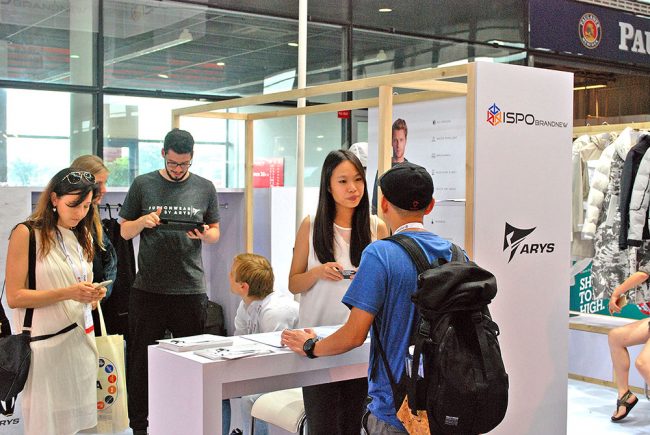
Low budget stand for companies from ISPO BRANDNEW and Market Introduction Programe (fot. Piotr Turkot / 4outdoor.pl)
Marcin Kwaśniewski from Milo has already tried to enter the Chinese market by exhibiting at ISPO BEIJING. Marcin decisively confirms the key role of a good business partner. His booth was visited by more than 200 visitors: “It all depends on the Chinese partner that you will find during the fair – either he will be efficient and will successfully manage the distribution or the fair will turn out to be a failure”. He adds: “If your stand is visited by so many potential clients, it is important to sensibly take advantage of it. You have to stay in touch – call, write e-mails, send catalogues and price lists, etc. It is best to do it in Chinese because not many people here speak English. I’d be interested in returning to China but on condition that I had a local partner or distributor. Going to China without such a partner only to look for a distributor during the trade show seems to be too much of a risk. If you don’t find a suitable partner then you won’t be able to deal with individual retailers on your own.” What is important, Marcin stresses that the symbol “Made in Poland” is perceived by the Chinese as an indicator of good European quality.
The example of Milo is not an isolated one – already back in 2008, the organizers decided to introduce an important business programme which helps in such cases. The project is called the Market Introduction Programme (see: interview on page 33) and its aim is to aid companies thinking about entering the Chinese market.
The Market Introduction Programme constitutes a unique mixture of formal, legal and cultural mechanisms required for running a business in China (including presentations of the latest analyses and market research). It is also an opportunity to meet face to face with selected Chinese distributors (the Networking Dinner) and, last but not least, a chance to participate in the Retail Tour of outdoor and sports stores in Shanghai.
Retail Tour of Shanghai
Visiting selected sports and outdoor stores seems to be the best method to find out how local retailers operate. It is also a great opportunity to familiarise oneself with brand portfolios offered in specialized shops and chain stores located in shopping malls. We had an opportunity to visit one outdoor shop belonging to the specialized Sanfo chain. We also visited one of typical massive shopping malls of Shanghai, which was dominated by mono-brand shops. Our tour ended in the concept store Oryx, which specialises in running.
The Sanfo chain is one of the biggest players on the Chinese outdoor market. Currently the chain consists of 34 specialized stores located in the biggest cities – Beijing (14 stores), Shanghai (4), Nanjing, Hangzhou, Chengdu, Shenyang, Shenzhen, Changchun, Qingdao, Shijiazhuang, Suzhou and Wux.
Only in Shanghai Sanfo has 4 shops. The one we visited was a typical two-level outdoor “corner shop” with a surface of 850 m2. The entrance stairs lead to the first floor. The interior of the shop is not very surprising – it is dominating by well-known global brands. The biggest surface is occupied by a shop-in-shop of Arc’teryx, which dominates the shop’s apparel segment. Other well exposed brands include Columbia, Haglofs, Mountain Hardwear, The North Face and Mammut. Backpacks come mainly from Gregory, footwear from Scarpa and Lowa, but there are also other brands such as Keen, Aku, Crispi, Zamberlan. Trail running is the realm of Salomon. It should not be surprising that Kailas plays the main part among Chinese brands.
However, surprise comes when we look at price tags of products. On average, prices are higher by 20-30% when compared to European prices. Although frequent customers may take advantage of “member prices”, which entitle to a 15% discount, prices still remain high. From trade-show conversations we deduce that there is a general tendency to lower prices so that they match European price levels. The Chinese travel round the world and have an opportunity to directly compare prices in other countries.
Sanfo also sells products online. It is easy to imagine that their online trade achieves high turnovers – thanks to the Internet they can access millions of customers. Two online platforms, Tmall.com (with a B2C profile) and Taobao.com (C2C), are very popular in China. Customers who seek brand goods have a guarantee that by using Tmall.com they will not end up with fake products. Brands willing to sell their goods through this platform have to go through a special registration procedure and meet certain formal and legal requirements. When talking about the Internet, it is worth mentioning that in China there is generally no access to Google and Facebook – I managed to connect to Facebook only at a respectful hotel. Yet, the Chinese do not seem to be especially concerned by these limitation – they have at their disposal local substitutes of Western social networks, which they seem to use even more intensely than Western societies. It is visible everywhere – when we travel by underground or stroll through Shanghai streets.
The next part of the Retail Tour led us to one of the shopping malls. Although it was not located in the very centre of the city, its size and standards could intimidate the biggest shopping centres in Poland. We visited its sports zone, where both sports and outdoor brands had their smaller or bigger stores. The biggest and most prestigious were reserved for sports brands – adidas, Reebok, Nike. However, deeper into the passage we noticed also outdoor mono-brands, such as The North Face and Marmot, but also their Eastern counterparts – Kailas, Ozark and BlackYak. On higher floors of the same shopping centre, there were more mono-brand shops – Patagonia, Columbia and Arc’teryx. This mono-brand trend best illustrates the direction in which the majority of global outdoor leaders heads. The biggest players have chains of mono-brand shops consisting of 100-200 stores.
The big number of sports stores is a result of a steadily growing demand of the Chinese people for healthy lifestyle. This is also a reflection of their chase after Western consumption goods. Aleksandra Przybysz, who lives and works in China, emphasises this national characteristic: “The Chinese are the most materialistic nation on our planet. They love buying and boasting about how much they have spent and on what,” (to read more about Alexandra’s experience see page 32). Within Chinese middle class (and millions aspiring to join this social group) prestige associated with possessing premium brands powers the biggest consumption mechanism in the world.
Similarly to Poles, the Chinese have fallen in love with running and fitness. There is an abundance of specialized shops for runners. Intense competition forces retailers to come up with various initiatives and ideas which help them to distinguish their shop from others. One of better ideas was a running concept-store called Oryx. Actually, the owners decided to have a 3-in-1 venue by combining a café, training facilities for club members and a retail surface. Club membership is a popular idea also in outdoor industry. Many stores initiate co-operation with clubs associating outdoor enthusiasts, e.g. trail runners, which allows retailers to offer their customers dedicated products with a “membership discount”.
Outdoor Market
Practically all major global brands are present on the Chinese market. Global players noticed the great potential of the Chinese market a long time ago. Dynamic development of consumption and home market has cooled down the Chinese economic boom. Nevertheless, the market keeps developing at a rate unachievable for European countries. According to a recently published report by the China Outdoor Association, the specialized outdoor market in China grew by 60% between 2001 and 2010. In 2011, for the first time, it exceeded the value of 10 billion CNY (approximately 5.7 billion PLN) only to reach 18 billion CNY in 2015 (10.26 billion PLN).
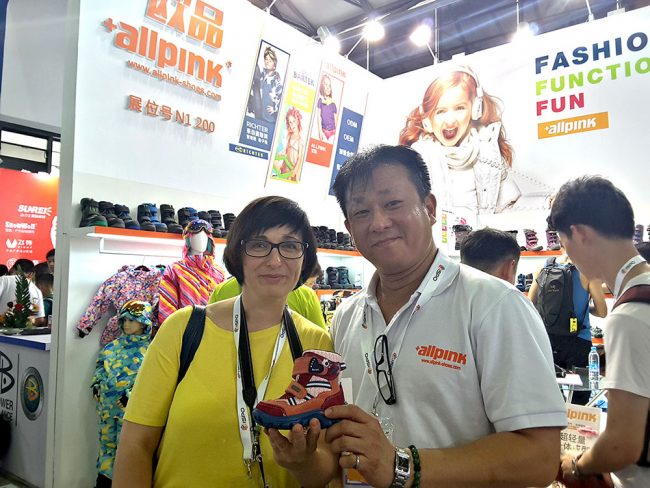
Polish accent, company Allpink, distributor of the Polish shoe brand Bartek – the owner and Joanna Biernacka-Goworek (ISPO TEAM) – fot. Piotr Turkot / 4outdoor.pl
Predictions for 2020 are very optimistic – according to estimates the core market should be worth 32 billion CNY, which amounts to over 18 billion PLN. And we are talking here only about the specialized market, because if we take into account a wider market, including low-budget brands, casual and fashion, and sports brands then we are dealing with the value of 45.4 billion CNY (25.87 billion PLN, 12.5% increase by 2014). Other interesting facts concern distribution channels: specialized shops account for 21.7% of sales, shopping malls for 62.9% (sic!), while online retailers sell 15.4%.
During a press conference opening ISPO SHANGHAI, a representative of Millet described the biggest challenges facing the Chinese outdoor market as follows: Retaining suitable profit margins, increasing outdoor awareness among customers (which translates into knowledge about specialized gear) and achieving balance between various distribution channels. We must admit that this list sounds familiar. We may only add that dreams of balancing e-commerce sound like wishful thinking not only in China…
***
ISPO Shanghai and ISPO Beijing are a great testing ground to verify capabilities of Polish companies. It is important to bear in mind that there is another famous trade show – Asia OutDoor in Nanjing. This year’s edition of Asia Outdoor took place from June 29 to July 2, which was one week before ISPO SHANGHAI. A good transition event between those two trade shows was ISPO ACADEMY. It turned out that both events – specialized Asia OutDoor and multi-segment ISPO SHANGHAI – may co-exist and mutually expand possibilities of Chinese trade, especially that many shops have a multi-sport profile.
According to Markus Huber (a cooperator of Outdoor Compass and a frequent visitor of Chinese trade shows), paradoxically at the period of a slowdown of the Chinese economy there is a greater need for business meetings, searching for inspiration and improving contacts with business partners. Difficult times call for bigger efforts and seeking new business platforms. Undoubtedly, one of the most important platforms was also the 2nd edition of ISPO SHANGHAI.
Piotr Turkot (translation Tomasz Przesmycki)

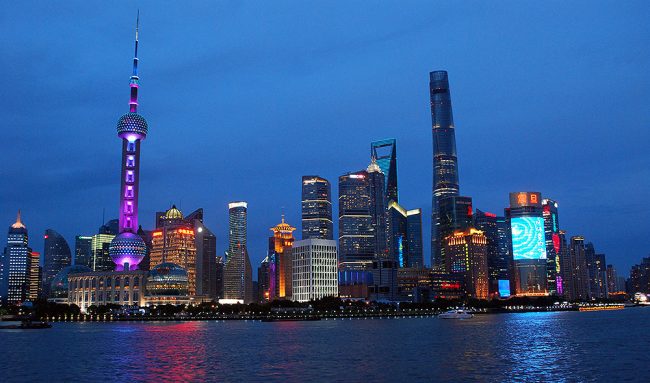
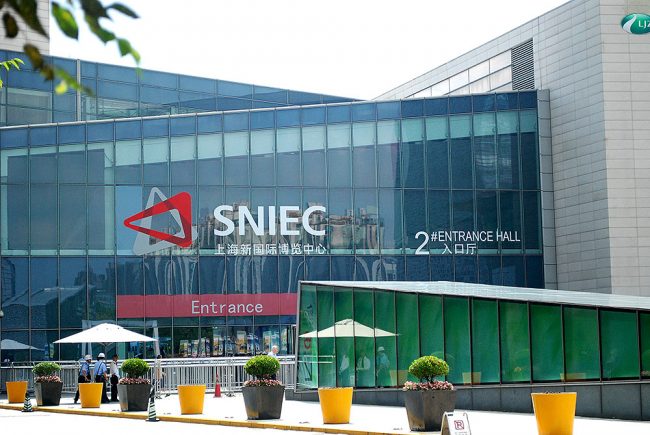
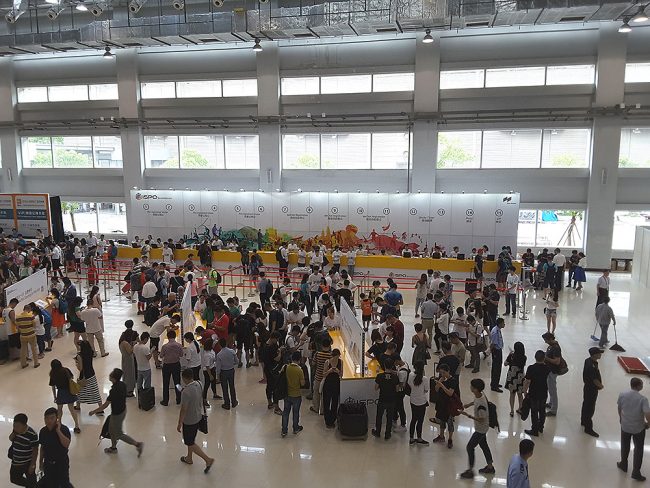
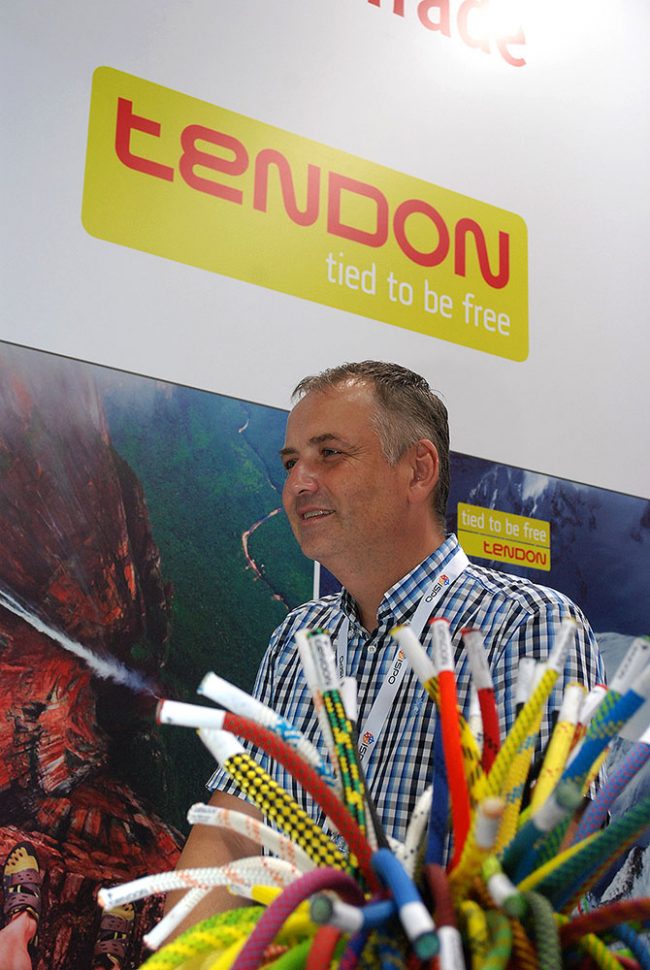
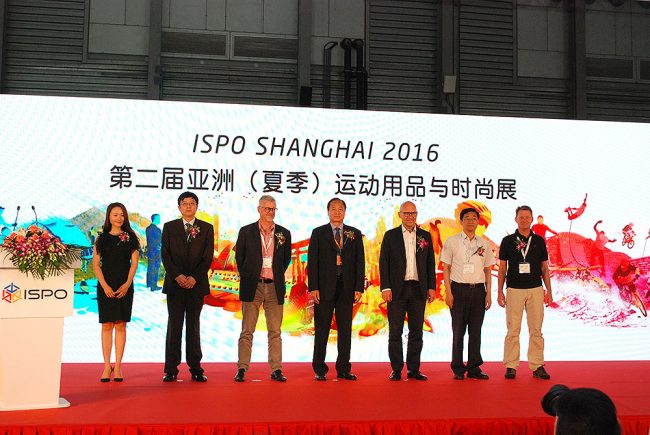
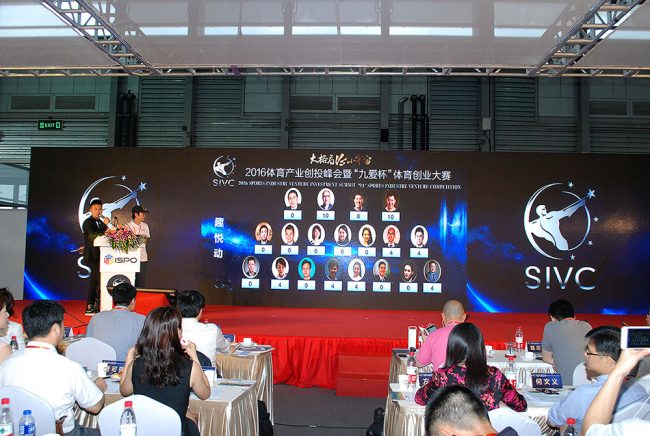
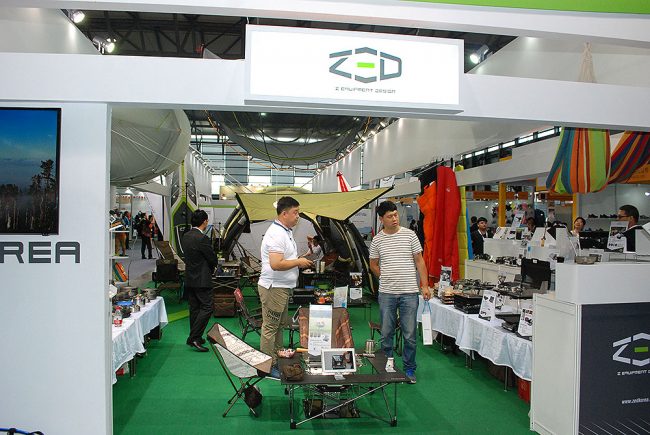
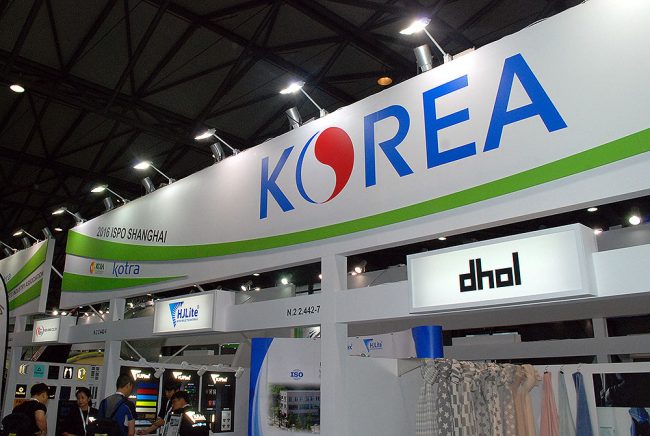
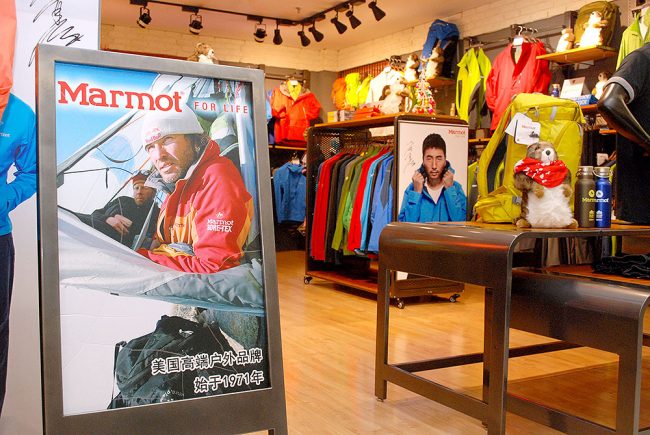
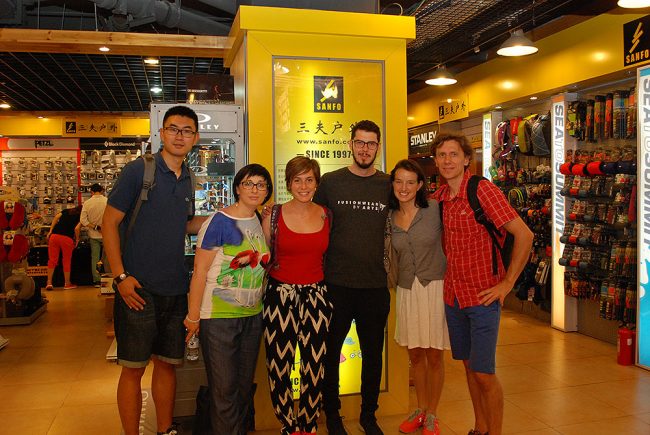
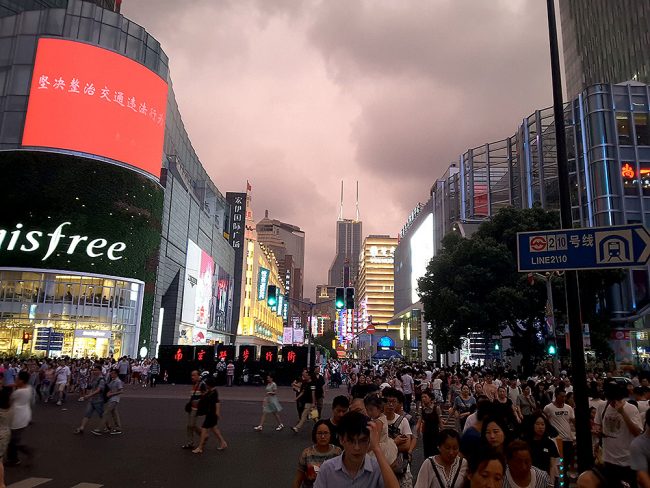
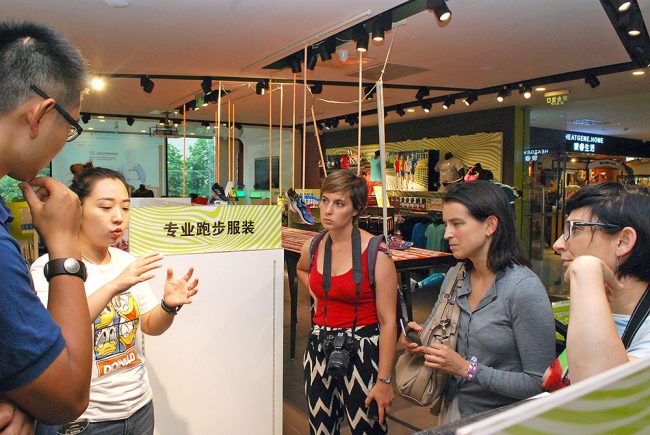
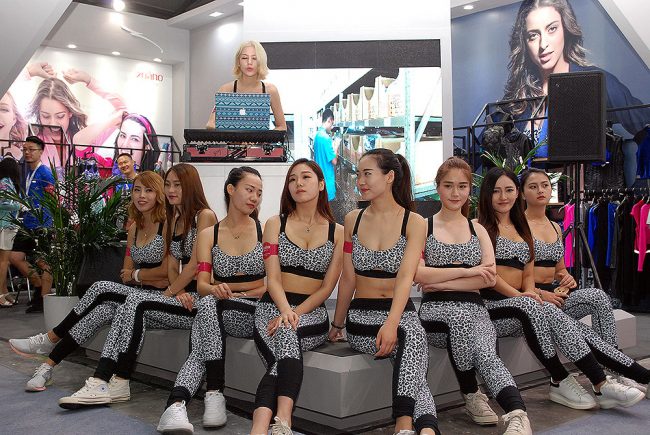
KOMENTARZE